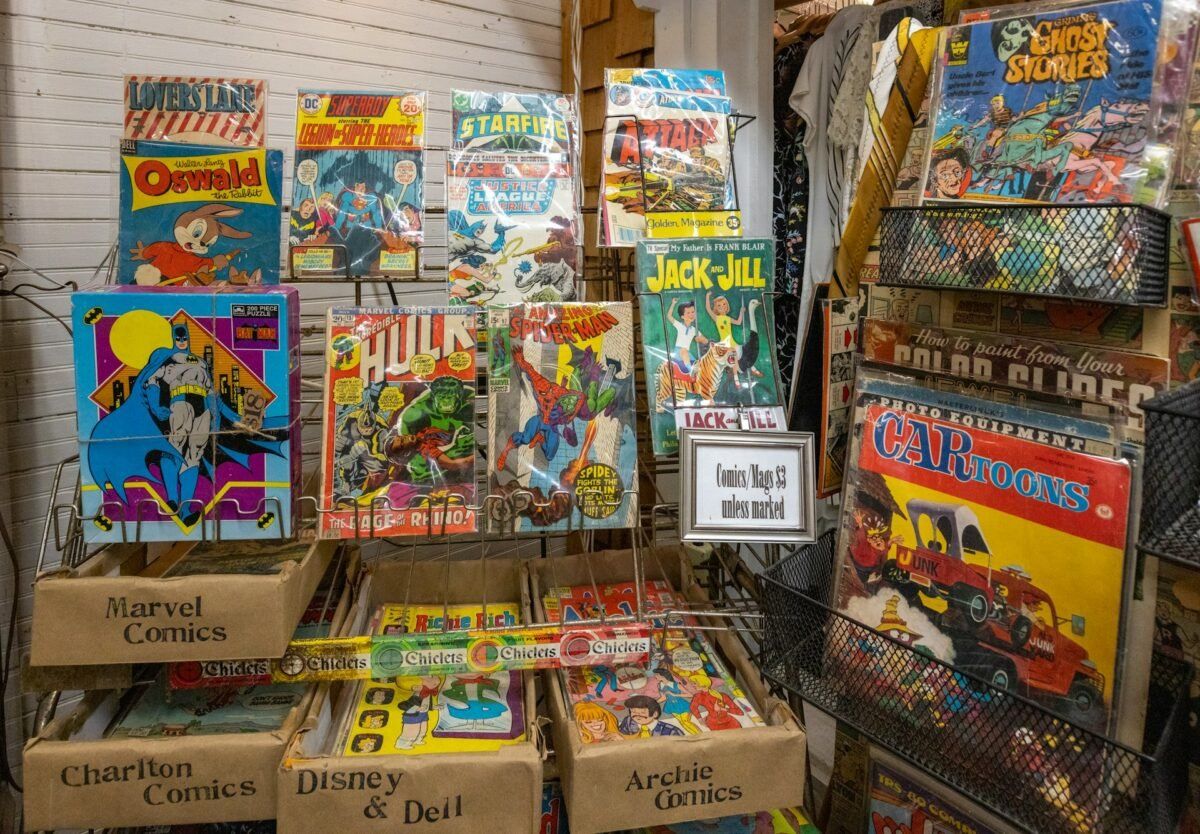An American comic book: a thin, saddle-stitched pamphlet filled with color and drawings. Also known as a “floppy,” the pieces of content have become a home for imagination, experimentation, and cultural debate.
With its origins all the way back in the 19th and 20th centuries, the comics have undergone several periods of reinvention to the mass-market periodical it is today. Learn more here.
Related: 6 Forgotten Comic Books from the ’80s and ’90s That Are Worth Thousands
Origins and Rise in Popularity
The earliest-known U.S. appearance of a sequential picture story, according to Yale’s Beinecke Library, was in an 1842 New York printing of Roldophe Töpffer’s The Adventures of Mr. Obadiah Oldbuck. The pictures appeared as a Brother Jonathan extra on September 14th, and the proto-comic helps explain how images-plus-text first entered American print culture.
By the early 1930s, publishers were experimenting with reprints and compilations. Eastern Color’s Funnies on Parade and Famous Funnies in 1933 are widely credited with the stapled, periodical format we recognize today.
Superheroes, War & Backlash
In 1938, the form changed again with the debut of Superman in Action Comics #1, which prompted the Golden Age superhero boom.
Throughout the 1940s, superheroes, war stories, and humor strips dominated the comic book scene and reached huge wartime circulations until World War II. At that point, crime, romance, horror, and science fiction temporarily covered the capes.
Check Out: What is the Most Expensive Comic Book Ever?
Controversy
Unfortunately, comic books did enter a period of controversy. In 1954, a U.S. Senate subcommittee probed comic books in hearings on juvenile delinquency.
Within the case, testimony from psychiatrist Fredric Wertham and publisher William Gaines was presented, and later, a self-regulatory body and the Comics Code Authority were created. The code shaped and restricted themes of violence, crime, and sexuality within the pages, driving some publishers out of business.
The Craft and Production
Today, the physical and professional conventions of comic books are highly standardized. The books use a trim size of 6.625 x 10.25 and are saddle-stitched, which is why page counts are in multiples of four.
Comic books usually range from 24-32 pages with heavier card covers, coated stocks, and a variety of special edition covers. The creative process is often divided between the writer, penciller (artist), inker, colorist, letterer, and editor.
Also Read: 26 Retro Movie Posters Film Buffs Will Want to Collect
Markets and Distribution
The economics of American comic books shifted in the 1970s with the emergence of specialty comics and the non-returnable direct market. With centralized distribution, pre-ordering, and a dedicated retailers’ catalogue totally transformed the collectibility of the comic book industry.
It is now the primary route for periodical sales, even with the presence of trade collections, bookstores, libraries, and digital storefronts playing an increasing role.
Indie Experimentation
Big-time companies aren’t the only ones putting out comic books. Grassroots minicoomics and Xerox-run chapbooks are also in the running, providing space for experimental forms and marginalized voices. This was also boosted by libraries and critics regarding comics as something that could be literary and culturally consequential.
This stemmed graphic novels and comic books to appear in several bookstores and library markets, further extending the reach of the “floppy.” Today, you can even find comic books on webcomics and crowdfunding platforms.
Check Out: Hershey Biopic Props Go Up for Auction in One of Hollywood’s Latest Period Sets
Collecting and Preservation
As the comic book industry grew, so too did the collecting culture around it. Bag and boards, long and short boxes, third-party grading, and “slabbing” all became industry standards for preservation and resale of prized comics.
Especially valuable are first appearances, #1 issues, and culturally pivotal stories, often drawing significant prices at auction to be placed in collections, museums, or other comic book-based places.
An Evolving Medium
While they are often compared to Japanese manga and Franco-Belgian bandes dessinées, American comic books have created a whole category of collecting and media consumption for hundreds of years.
Superheroes dominate the headlines, but other genres continue to make appearances in these prized comics, showcasing the balance between blockbuster franchises and indie collections.
Starting from a 19th-century picture story reprinted in an immigrant newspaper to a digitally serialized creator-owned series, these comics have stood the test of time, highlighting the highs and lows of humanity.
Read Next: The Impact of Trading Cards on Sports, Entertainment, and More
As print and digital platforms evolve, so too will the comic book, but the staple-bound pamphlet still sits at the heart of what makes an American comic book unforgettable.
